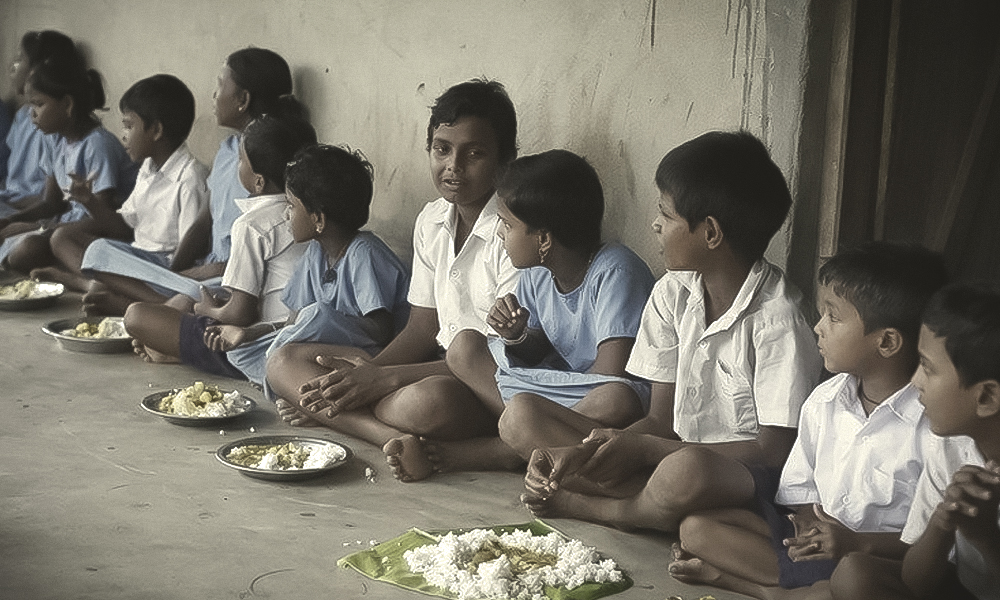
Image Credits: Representational Image
32% Children Below Five Are Stunted In India: Cornell University Study
Writer: Ankita Singh
A literature lover who likes delving deeper into a wide range of societal issues and expresses her opinions about the same. Keeps looking for best-read recommendations while enjoying her coffee and tea.
India, 2 March 2021 2:10 PM GMT
Editor : Shubhendu Deshmukh |
Shubhendu, the quint essential news junky, the man who loves science and politics in equal measure and offers the complete contrast to it by being a fan of urdu poetry as well.
Creatives : Vijay S Hegde
I am a creative, artistic and ambitious designer, with a talent for thinking outside the box and coming up with innovative ideas and designs. I graduated with a 1st Class honors degree in Video Editing from MAYA ACADEMY OF ADVANCED CINEMATICS
A new study conducted by Cornell University suggests that increasing the space between two live births can reduce the risk of stunting.
As many as 32 per cent of children below five are stunted in India, according to the National Health Family Survey-5.
The survey conducted by Cornell University suggests that increasing the space between two live births can reduce the risk of stunting. A number of empirical studies have found out that second or higher-order children often lag behind firstborns in height outcomes, especially in developing countries.
At the same time, empirical investigations of birth-order effects on child height overlook the potential impact that birth spacing can have.
Evidence from India demonstrates that the negative association between increasing birth order and child height is driven by the short intervals between births.
The researchers linked height-for-age standardised scores (HAZ) of children under five years as recorded in the latest Indian Demographic and Health Survey (DHS) to an indicator of birth order, disaggregated by the length of preceding birth spacing (PBS).
The researchers noted that the firstborn height advantage is significant if the birth spacing between the higher-order child and its immediate elder sibling is less than three years, and this advantage gets steeper with increasing order of birth, reported The Times Of India.
The height gap between the third-born and the firstborn is four times the gap between the second-born and firstborn. It was also observed that if the birth spacing between the higher birth-order child and its immediate elder sibling is three or more years, the firstborn height advantage disappears, and it becomes insignificant.
A birth gap of three years is generally promoted as per India's family planning programme. But, the study observed that around 85 per cent of the women aged between 15 to 19 years and 60 per cent of the women aged between 20 to 29 years have a birth spacing of fewer than 32 months.
A World Bank study has found that 1 per cent loss in adult height due to childhood stunting is associated with a 1.4 per cent loss in economic productivity. According to estimates, stunted children earn 20 per cent less as adults.
It is also observed that if stunting is accompanied by excessive weight gain later in childhood, there is an increased risk associated with developing adult obesity and nutrition-related chronic diseases such as cardiovascular disease, strokes or type 2 diabetes which might happen later in adult life.
The study has also found that stunted girls carry an additional risk of having adverse pregnancy outcomes and reproductive complications when they become adults, leading to detrimental intergenerational effects.
Prabhu L Pingali, a professor of applied economics and director Tata-Cornell Institute, and co-author of the study said that the causes of inadequate nutrition can be complex, encompassing biological, economic, social and political issues. He also shared that the findings on birth spacing highlight the missing link in the literature that explains the slow improvement in child height outcomes in India.
Pingali also mentioned that the study assesses how the effects of birth order change when spacing is accounted for
Also Read: Mental Health Disorders, Alcohol Misuse More Common In LGB People: Study
 All section
All section














